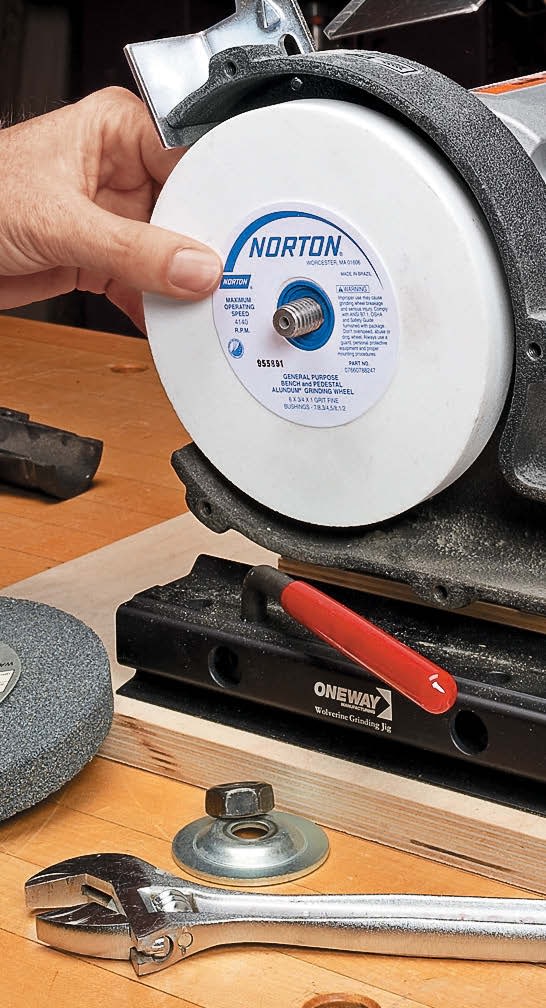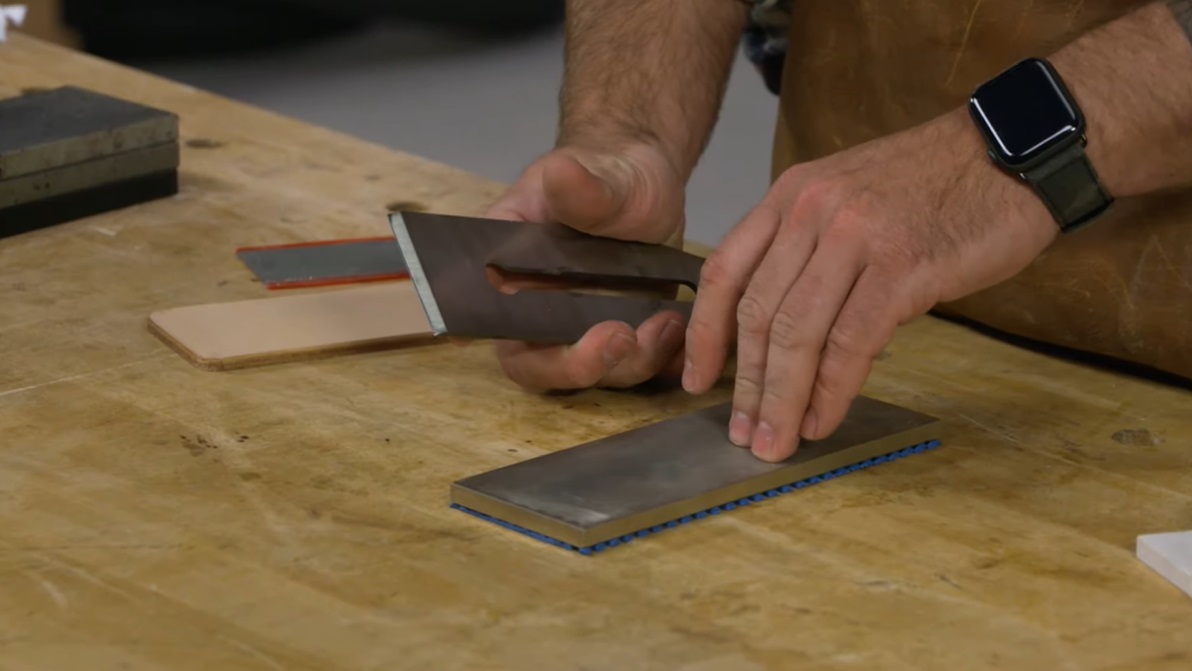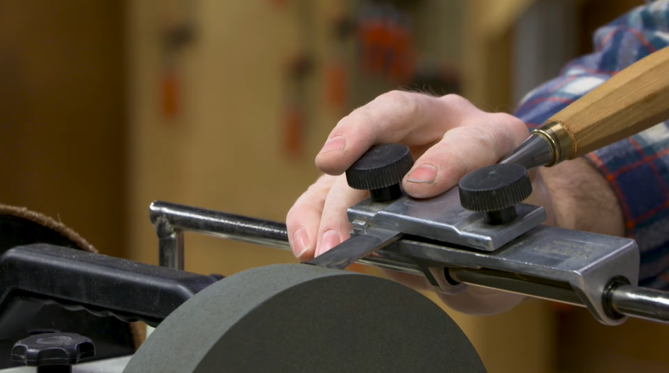
A bench grinder is an indispensable tool for maintaining an edge on chisels, turning tools, and plane irons. For many woodworkers, it's the first step in the tool sharpening process. But most bench grinders come with inadequate tool rests that make it difficult or impossible to get consistent results. Fortunately, there are a few after-market tool rests that can improve your ability to grind tools accurately and safely. I recently tried out a couple of these.
REQUIREMENTS Before looking at each of the different models, it's worth taking a minute to focus on what's important in a tool rest. First, it needs to provide a stable platform. That is, it should be able to hold the tool firmly at a predetermined angle without excessive vibration. And this is where most of the stock rests fall short. They're often undersized and made of thin steel, held in position with a wing nut.
The second important feature to look for in a tool rest is easy adjustability. You need to be able to set the correct grinding angle for a variety of different tools. And once the angle is established, the rest needs a reliable, solid mechanism to lock in that angle.
Finally, since your grinding tasks might include everything from a large turning gouge to a small spokeshave blade, having a versatile tool holder to make the task easier and safer is a big plus.
THE VERITAS GRINDING SET
The first tool rest I looked at was the Veritas Basic Grinding Set. As the name implies, this is more than just a tool rest. It's a complete sharpening system with a grinding jig and an angle-setting gauge.
SETTING UP At the heart of the system is the anodized aluminum tool rest that mounts to a board along with your grinder. The rest features a large platform that includes a slot for the grinding jig. The main photo above shows the tool rest and jig in action. Position adjustments are made easy with the two spring-loaded handles that allow you to move the platform to just about any grinding angle.

THE ANGLE-SETTING GAUGE Zeroing in on a specific angle can be a hassle in any sharpening setup, but the plastic gauge included with the Veritas set makes it a breeze. The gauge includes the most commonly used bevel angles of 20°, 25°, 30°, and 35°. While holding the gauge against the wheel, you simply lock the platform to the matching angle, as shown in the photo below.
THE GRINDING JIG With the tool rest locked in place, the next step is to mount your tool in the grinding jig. A pair of thumbscrews tightens down a clamping bar, securely holding the tool in place. A brass pin registers the blade at 90° for most common tasks. The main photo and inset on the opposite page show this pin. To sharpen skew chisels, simply move the pin to change the angle to 30°.
Overall, the Veritas jig provides a solid and easy-to-use grinding system for a very reasonable price.

__ WOLVERINE__ The second tool rest I tried was the Wolverine Oneway. Since Oneway makes some of the finest lathes on the market, it's no surprise that this tool rest is geared toward sharpening turning tools.
CONSTRUCTION The photo above shows how the Wolverine works. A base mounted beneath each grinding wheel supports a 3/4"-square steel tube arm. The adjustable arms hold a tool rest on one wheel and a unique design for sharpening longer tools on the other. The square tube arms slide in well-machined channels on the base and lock in place with oversized handles. For ease of use and holding power, these locks just can't be beat. And the all-steel construction ensures a lifetime of reliable service.
__ A STABLE PLATFORM__ The Wolverine's tool rest takes full advantage of the steel construction by providing a rock-solid surface. This platform is for grinding chisels and other flat beveled tools. It's great for free-hand grinding, but jigs are available to hold chisels and plane irons as well. Or you could easily build a couple of shop-made jigs for your other tools.
A DIFFERENT APPROACH But the Wolverine really shines at sharpening turning tools. For example, rather than trying to set a platform to the proper grinding angle for a roughing gouge, the Wolverine handles the task with a pocket on the sliding arm to hold the end of the tool.
By sliding the arm toward or away from the wheel, you can set the grinding angle to match the gouge's bevel. Once in place, you just rotate the gouge against the wheel to sharpen it across the full face of the cutting edge.
This is a great method for grinding and maintaining consistent bevels. And since turning tools need very frequent touch-up sharpening, this design is a winner.
BOTTOM LINE All in all, you can't go wrong with either of these wellmade systems. Which one is right for you depends on the kind of woodworking you do.
Replacement Grinding Wheels

To get the most out of your bench grinder as a tool sharpening system, you'll probably want to replace the wheel. Most grinders are sold with a gray, all-purpose wheel that's not well-suited for grinding tool steel.
The white, aluminum-oxide wheel in the photo will help you get better results. This wheel has a softer bonding agent holding the abrasive particles. The soft bond allows the abrasives to break away as they lose their cutting edge. This exposes fresh abrasives and prevents the wheel from loading up with metal filings, keeping it running cooler and making it less likely to burn your tools.











